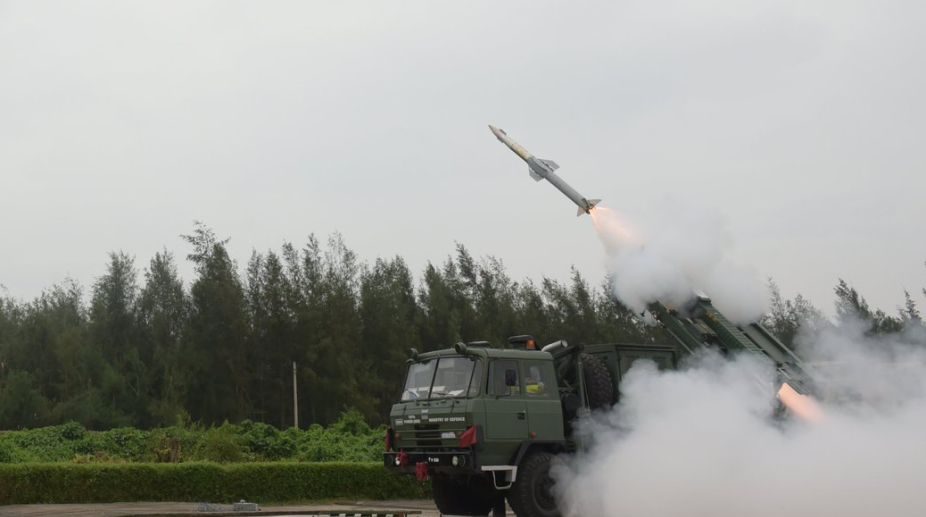DRDO successfully conducts first flight test of long-range land attack cruise missile
The missile was launched from a mobile articulated launcher, achieving all primary mission objectives.

Representational Image (Photo: Twitter)
India’s indigenous subsonic cruise missile, Nirbhay, which failed its last test in December 2015, is ready for its fifth trial, DRDO chief S. Christopher said on Sunday.
“We are planning to have one probable trial (of the missile) next week,” Christopher told IANS on the sidelines of a three-day international conference Fipsphysiocon -2017, organised by the Defence Institute of Physiology and Allied Sciences.
The DRDO chief said the glitches that led to failure in its fourth trial in December 2016 have been removed.
Advertisement
Nirbhay’s December 2016 trial was aborted half-way as the missile changed its targeted course. It had to be destroyed within minutes of taking off amid a threat that the missile could hit land.
The 750-1,000 km-long range missile’s first test on March 12, 2013 failed as it fell after 20 minutes of flight. The second on October 17, 2014 was, however, successful.
The third test on October 16, 2015 saw the missile nose-dive after covering 128 km in the Bay of Bengal.
The cruise missile is expected to supplement the Indo-Russian joint venture supersonic cruise missile BrahMos, which can carry warheads up to 290 km.
The two-stage missile has a length of six metres, a diameter of 0.52 m, a wing span of 2.7 m and a launch weight of about 1,500 kg.
With the capability to strike deep into enemy territory, Nirbhay has been designed and developed by the DRDO at it’s aeronautics R&D laboratory ADE (Aeronautical Development Establishment) based in Bengaluru.
The cruise missile is powered by a solid rocket motor booster developed by the Advanced Systems Laboratory (ASL) and is guided by a highly advanced inertial navigation system indigenously developed by Research Centre Imarat (RCI).
Advertisement